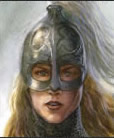Forum
Welcome Guest |
|
|---|---|
 Author Author |
Topic: |
|---|
| Faerfaen |
|
||||||||
| Silmarwen22 |
|
||||||||
| Faerfaen |
|
||||||||
| atalante_star |
|
||||||||
| PotbellyHairyfoot |
|
||||||||
| sari_berry |
|
||||||||
| Figwit |
|
||||||||
| LadyBrooke |
|
||||||||
| Elthir |
|
||||||||
| TheOrangeblossom |
|
||||||||
| El-TazrÃn |
|
||||||||
| Elthir |
|
||||||||
| heri_sinyë |
|
||||||||
| starofdunedain |
|
||||||||
| Chocolatequeen |
|
||||||||
| Elthir |
|
||||||||
| Gandolorin | |||||||||
| Elthir |
|
||||||||
| Gandolorin |
|
||||||||
| Members Online |









 West Gate Moria inscription... hunh??
West Gate Moria inscription... hunh?? Though I suppose he's entitled to a mistake or two as well if not.
Though I suppose he's entitled to a mistake or two as well if not.  What's more, the Elves too often lived underground, but never referred to their own dwellings as 'dark pits'. So... I think this was a mistake.
What's more, the Elves too often lived underground, but never referred to their own dwellings as 'dark pits'. So... I think this was a mistake.





